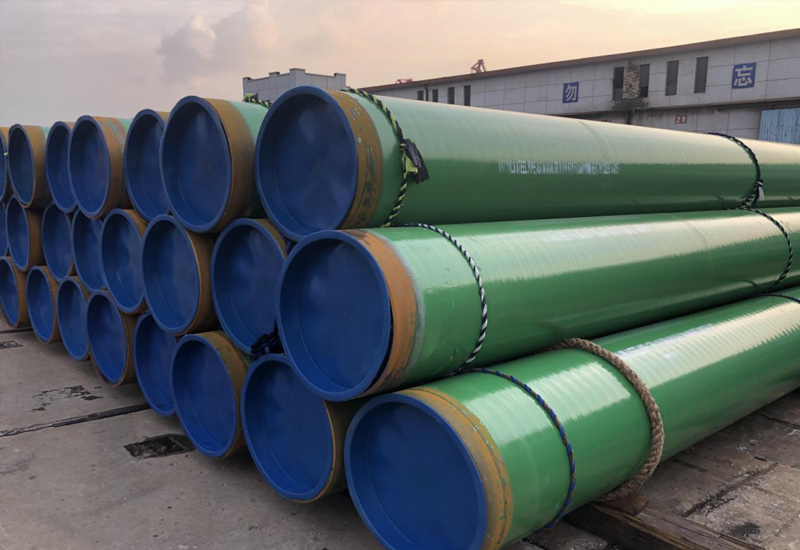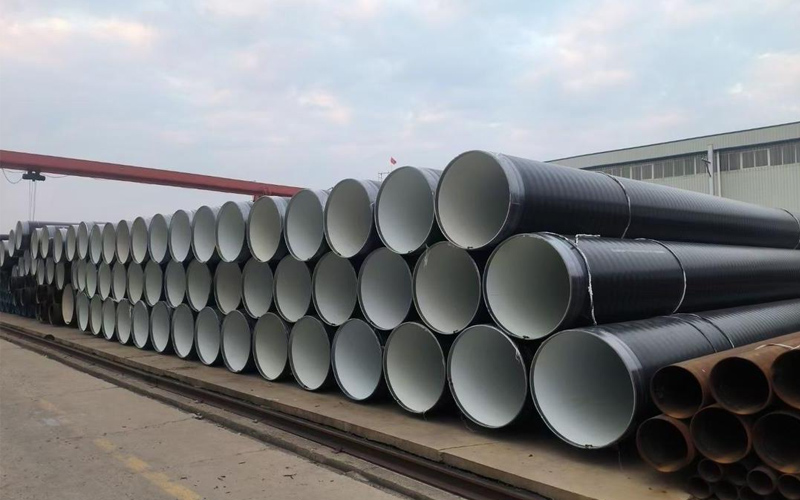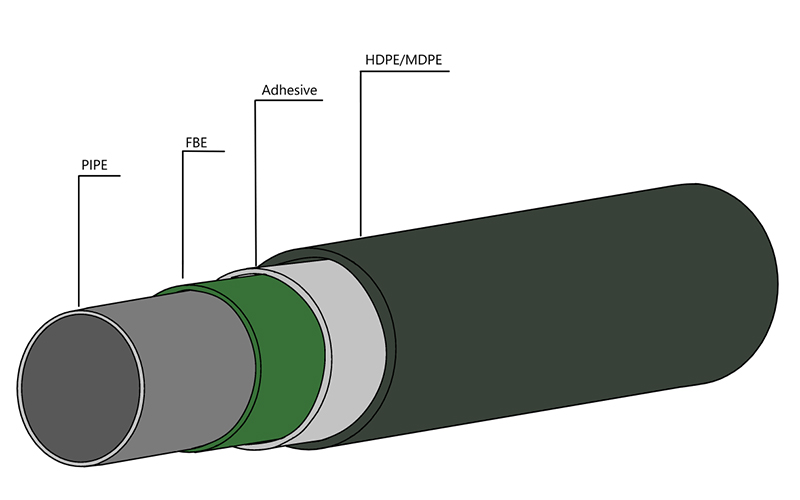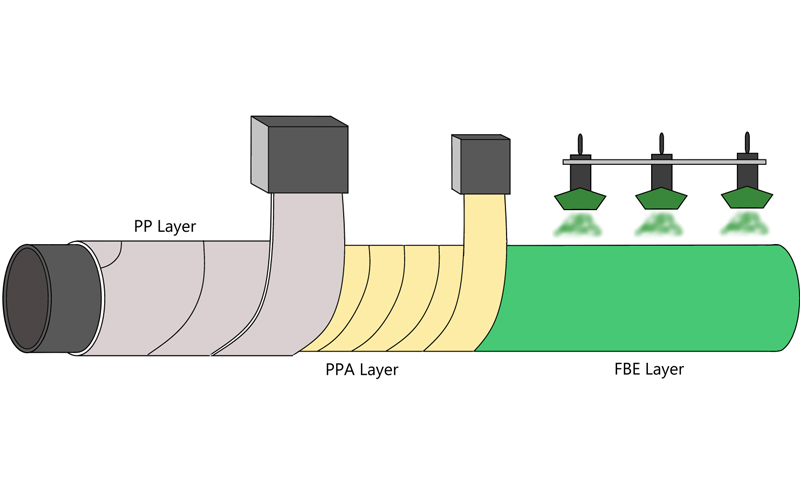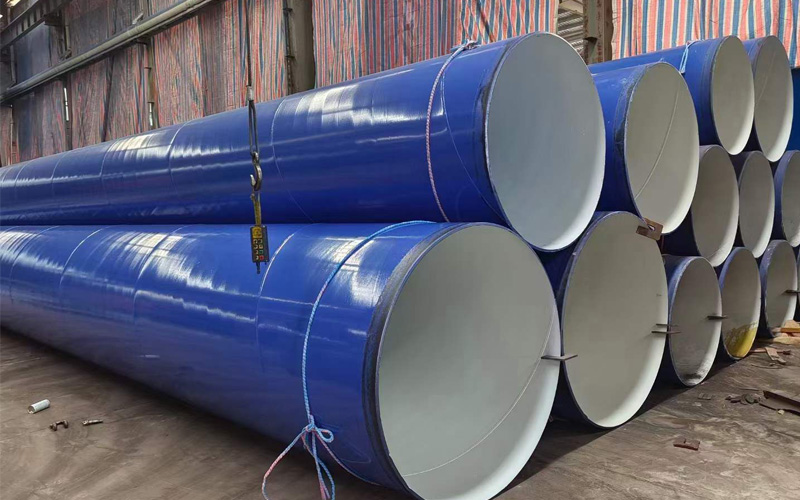LSAW Steel Pipe Grades: From X42 to X80
Introduction: Why Understanding LSAW Steel Pipe Grades is Crucial
In the construction of large-scale, high-strength, long-distance oil and gas pipeline, the manufacturing of LSAW steel pipe has been particularly important. Due to its good pressure resistance, good uniformity, good precision, reliable weld quality, large diameter range and various types, it is often used in construction. However, the selection of LSAW process alone is not enough to make the pipeline system have a high quality, reasonable cost and the safe, stable usage; The important key of the problem also lies in choosing the right steel grade.
Each grade of pipe has unique physical properties and will pass specifications that are strictly required for the appurtenances of that grade. If the grade is chosen too high or too low, this will usually result in expensive testing overruns or even a possible safety issue. This document is going to be an overview for the most common steel grades under the API 5L (X42-X80), so you can decide when to buy and use those specifications, since it is not that simple to decide.
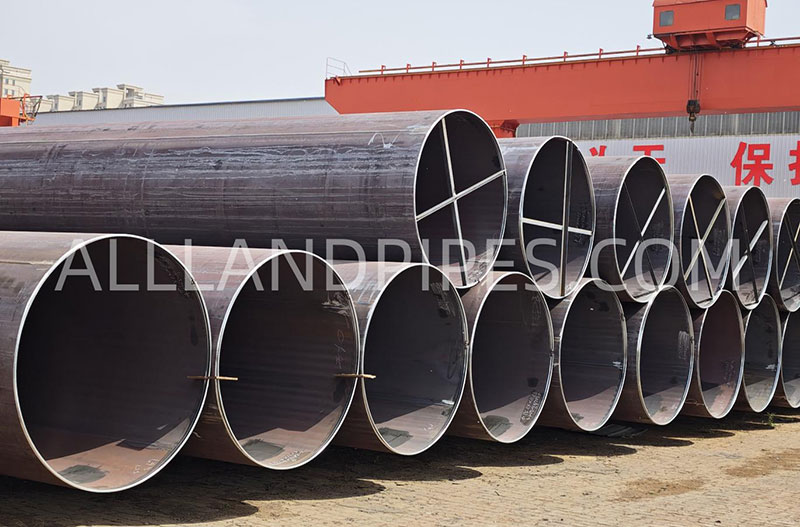
Performance and Application Scenarios of Mainstream LSAW Steel Pipe Grades
X42 LSAW Steel Pipe: The Balance Point of Reliability and Economy
The long serving and more popular entry level line pipe steel present in the API 5L standard is the X42 steel grade. It maintains approximately the same strength and toughness as when it was rolled despite its strength.
· Performance Characteristics: Processing performance and welding performance of this steel plate is good; Commonly used in building and construction machinery.
· Application Scenarios: It is the most suitable for conveying gas, water, oil and some solid materials or powdery materials on the rear into various pipelines and meters under the general working pressure. X42 LSAW steel pipes are also applicable in urban constructed feeding, tra pk ing line, wells and long-distance piling, and for oil, natural gas and industrial use, also used in other applications.
X52 LSAW Steel Pipe: The Most Widely Used Workhorse
The X52 steel grade increases the minimum yield strength to 52,200 PSI (360 MPa) and is one of the most extensively used line pipe grades globally. It strikes an excellent balance between strength, toughness, and weldability.
· Performance Characteristics: Excellent comprehensive properties, moderate strength, good corrosion resistance (especially with the addition of corresponding alloying elements), and significant economic benefits.
· Application Scenarios: Widely used in both onshore and offshore medium-to-high pressure oil and gas transmission trunk lines. Whether for long-distance natural gas pipelines or crude oil transport, X52 LSAW steel pipe is the undisputed mainstay, meeting the design requirements of most mainstream pipeline projects.
X60 LSAW Steel Pipe: Born for Higher Pressure and Greater Flow
With the rising of pipeline transport pressure, the steel grade of the pipe body also appeared X60. The minimum yield strength is 60,200 PSI (415 MPa) in this category for line pipe steel.
· Performance characteristics: The high strength can transport larger flow at the same pipe size or on same flow condition, it can reduce the pipe wall thickness, saving the cost in pipe inch, the higher strength also can save the cost in construction.
·..
X70 LSAW Steel Pipe: Synonymous with High Pressure, Large Diameters, and Harsh Environments
The minimum yield strength of high strength line pipe steel X70 is 70,300 PSI (485 MPa). Its innovation has greatly developed the technology for long distance, large diameter, high pressure gas transmission pipelines.
· Performance Characteristics: It is a material with ultra-high strength and good toughness, and has good fracture toughness especially at low temperature. To be reliable in severe service, it will usually have to meet PSL2 technical requirements..
· Application Scenarios: X70 LSAW steel pipe is the most suitable for cross-country and transnational natural gas pipeline projects required a large number of steel pipe with the same steel grade, which is also the best choice for the high-pressure gas pipeline construction and long-distance transportation, as well as the special requirements for the high or low temperature environment. Its high strength feature provides possibility to reduce steel consumption and cost of construction, the pipe itself is the standard grade for high-pressure transmission mode of transportation..
X80 LSAW Steel Pipe: The Cutting Edge of Ultra-High-Pressure Transport
X80 is one of the highest-grade line pipe steels in commercial use today, with an astonishing minimum yield strength of 80,000 PSI (555 MPa). It represents the pinnacle of modern steelmaking and pipe manufacturing technology.
· Performance Characteristics: Ultra-high strength, with exceptional toughness and resistance to deformation. It demands extremely stringent production processes, often utilizing advanced micro-alloying and Thermomechanical Controlled Processing (TMCP).
· Application Scenarios: Specifically designed for ultra-high-pressure (typically above 12 MPa) natural gas transmission projects. Using X80 LSAW steel pipe maximizes transport efficiency and reduces the number of compressor stations, making it the core material for world-class energy arteries like the “West-East Gas Pipeline” project.
Manufacturing Processes: How JCOE and UOE Shape LSAW Pipes
The performance of an LSAW pipe depends not only on its steel grade but also on its manufacturing process. The mainstream production methods include the UOE process and the JCOE process.
· UOE Process: A steel plate is formed through U-pressing, O-pressing, pre-welding, internal welding, and external welding. This method offers high production efficiency and stable quality, suitable for large-batch, single-specification production.
· JCOE Process: A steel plate is progressively formed in a J-C-O-E sequence. This method provides high production flexibility, making it suitable for multi-specification, small-batch orders, and it holds an advantage in producing large-diameter, heavy-wall pipes.
Standard Interpretation: API 5L and the Choice Between PSL1/PSL2
All LSAW linepipes comply with API 5L. This standard specifies two Product Specification Levels (PSL): PSL1 and PSL2.
· PSL1: Product specification level, PSL1 (with compliance with line pipe standard), containing general requirements.
· PSL2: Based on chemical composition, it is more under strict control of manufacturing, destructive tester, dimensions, non-destructive tester, and pressure, temperature ratings. It requires Charpy impact testing, and has a slightly more restrictive carbon equivalent, resulting in better weldability and improved toughness.
The PSL2 standard is generally mandatory for high-grade above X60 steel and for pipelines used in extreme locations, such as sour service, low-temperature or offshore testing.
Conclusion: How to Scientifically Select the LSAW Steel Pipe Grade
The decision-making process for the selection of LSAW steel pipe grade is very comprehensive, which requires the trade-offs between technical requirements and economy costs. The core criteria include:
1. Design Pressure and Conveying Medium: the main criterion for the steel type is based on it. The more pressure, the higher the grade needed.
2. Pipeline Environment: Harsh environments, such as corrosive soil, low-temperature regions, or offshore locations, typically demand pipes with higher toughness (usually PSL2) and a higher steel grade.
3. Economic Analysis: Higher grades can reduce wall thickness, saving material and transportation costs, but their unit price is higher. A full life-cycle cost-benefit analysis is necessary.
4. Welding and Construction Capabilities: Higher steel grades also place greater demands on on-site welding processes and construction techniques.
In summary, from the economic practicality of X42 to the cutting-edge performance of X80, each steel grade has its irreplaceable value. Only by deeply understanding their characteristics and combining them with specific project needs can a safe, reliable, and cost-effective pipeline masterpiece be built.
FAQ (Frequently Asked Questions)
1. Whether X70 LSAW steel pipe can be used in high pressure lines?
A: Yes, X70 LSAW steel pipe is suitable for high pressure delivery, especially for long distance natural gas transportation project, and it is one of the product that we are currently studying. Its tensile strength is 70.300 PSI, useful in high pressure metal stamping. But it is still necessary to choose precisely in the design pressure and ambient temperature and media properties, API 5L PSL2 are perfect for those situations, which cover the normal+mild and lower- temperature, and the environment one, of course without involving in a severe environment, as very extreme low temperature and pressure, the requirement of it’s close to China grade X70 and X80.
2. What is the impact of PSL1 vs. PSL2 on steel grade selection?
A: This selection between PSL1 and PSL2 provides a wide-ranging effect on the reliability of the steel grade. PSL1 describes the least requirement, and PSL2 has higher requirement for the quality of the pipe type, with PSL2 having stricter chemical and mechanical properties, and testing requirements. For high grade steels (X60 and above) and especially for sour service and offshore use, the technical conditions apply also to PSL 2. The selection PSL2 indicates that the pipeline has a greater safety stock and better resistance to crack initiation and extension. So when we order large numbers and higher grades like X70 and X80, the low limit is almost always PSL2 techincal specification.
3. On a limited budget, can a lower grade (like X42) with a thicker wall replace a higher grade (like X52)?
A: In theory, adding more to the wall thickness can give you the pressure capacity of a lower grade pipe. In practice, however, this replacement demands a full check. Increasing wall thickness significantly increases steel tonnage with heavy pipe weight, therefore increasing transportation charges and cost of on-site handling. A wall that is any thicker can further complicate on-site welding. So, while it may work for some short distance, low risk projects, it’s not likely to be the most cost-effective or efficient solution in the case of long distance pipelines when a higher grade such as X52 or X60 with a higher optimized wall thickness is considered.
Get Your Custom Steel Pipe Quote Today!
Provide us with your project details (like application, specifications, quantity). Our experienced team will respond with a tailored solution and competitive quote within 24 business hours.
Related Articles
ASTM A53 vs. API 5L: A Guide to Selection and Application
Introduction:Technology differences determine success or failure, and selection needs to be “precise”
Steel Density Analysis: Core Differences between Mild and Medium Carbon Steels and Industrial Applications
3LPE coated steel pipe: a solid barrier in the field of industrial corrosion protection
3LPP coated pipe: anti-corrosion guard in high temperature and high pressure environment
FBE steel pipe: the technological armor of the steel defense line
HOT TAGS
latest posts
- 3LPP coated pipe: anti-corrosion guard in high temperature and high pressure environment
- ASTM A53 LSAW Steel Pipe Selection Guide for Oil and Gas Transportation Pipelines
- API 5L LSAW Pipe: A Deep Dive into PSL1 vs. PSL2
- Steel Pipe Sizing Errors? DN vs. OD Explained for Buyers
- NDT for Pipe Welds: X-ray vs. Ultrasonic Testing




